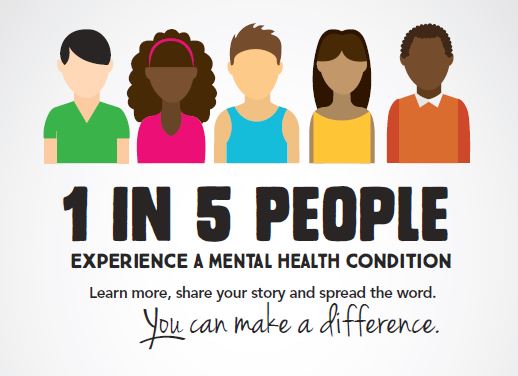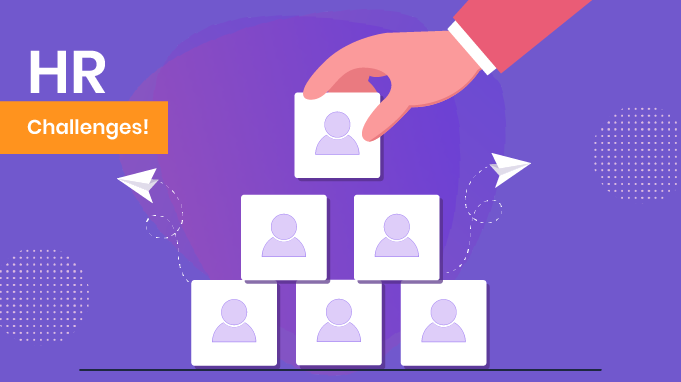Mental health issues are a growing concern for HR leaders. The World Health Organization estimates that there are 300 million people with depression, which is an astonishing number of individuals to provide support and understanding. When mental illness is left untreated, it can result in significant losses for the individual as well as others who care about them.
What Mental Health Issues Do Leaders Face?

Employers have a responsibility to take action because employees with mental health conditions often need accommodations at work due to their disabilities. Mental illnesses may make it difficult or impossible to perform some job functions, so employers should design reasonable accommodation plans tailored to each employee’s needs.
After a year of many COVID deaths and social distancing, people don’t have jobs, and this worries them largely. It’s not surprising that about 60% of employees worry because of all the stress in their lives.
As a people leader, you will feel like it is your responsibility to make sure that people in your company are well. It can be hard to do this when the time is so tough. But you don’t have to do this alone. However, Paycor said that 86% of business leaders are worried about mental health in the workplace.
We found out what employers are worried about this year. They are worried about these things:
- Stress
- Depression
- Anxiety, and
- Suicidal thoughts
Furthermore, there are strategies that can help with all of these problems.
1. Helping Employees Cope With Stress and Transitions

This past year has made changes in many different jobs. Some people had to change their work. Some people had to change how they work. They had to do different things for this job, or fewer things with this job. This is because of some new rules or new laws that came into place during the last year that changed how people worked.
Some people are using unhealthy ways to cope with stress. Substance use is on the rise, as is social isolation. These things can make your mental health worse.
One way to help people who are struggling with stress or mental illness is with change management. Change management is a method of helping people make changes at work that will not be too stressful on them.
Here are three things you should do to help your employees move through times of change:
When employees have emotional or mental health problems, you should try to help them. You can do this by listening and supporting them.
Model self-care behaviors. This encourages others to prioritize their health and wellness, too.
Promote safety in the workplace and on teams. It is important that people feel safe to share their thoughts and ideas without being judged.
2. Dismantling Barriers to Mental Health Care

You provide mental health benefits and resources. How do you know if people use them and if they’re getting better?
A major roadblock to mental health support in the workplace is a lack of interest in the provided employee assistance programs (EAPs). If your employees are not using the EAP, ask them why. They could have a reason why they don’t want to talk to a counselor. The problem could be that they do not want to give up their privacy, feel embarrassed, or just need someone else to talk to.
Some employees are not aware of what their EAP is or think it will not help. Most of the people surveyed said they had not tried to get mental health care using their employer-sponsored benefits. And most didn’t know if they offered mental health care, either.
Employees might be afraid that their mental health information is not private anymore. A professional benefits expert can tell them how they keep the information private.
Complicated enrollment processes might make people not go to the doctor. You can search for mental health providers, but some are not taking new patients, some have waiting lists for months, and some have changed insurances. This can be too hard for people who are already stressed or mentally ill.
Your company offers solutions that don’t work well for employees. Meditation apps, zero copays, flexible time off, and other “quick-fix” solutions for mental health may not help as much as you think. That’s why it’s important to know the key criteria to look for when evaluating your current mental health benefits of choosing a new solution.
One of the biggest barriers to getting help is that work makes people feel uncomfortable. They worry about being stigmatized or punished for having a mental health problem.
3. Creating a Safe, Inclusive, and Mentally Healthy Workplace Culture

Employers should try to make sure people with mental health problems feel ok about talking about it.
It is okay to talk about mental health at work. You can talk in meetings or emails. For example, write emails that explain your mental health benefits. This will help people who are suffering feel safe to speak about it with their coworkers.
For employees to feel good, they should have the resources to take care of themselves. That includes mental health providers. It also includes flexible schedules, paid time off, and paid mental health days.
Make sure that you create a good environment for your workers. They want to feel like they are supported at all times, not just when they are sick. This will make them happy and healthy.
Furthermore, it is important to make sure that your company includes people with mental health. It can be hard for people who have mental health problems because employers sometimes overlook them when they think about their benefits. This can lead to employers not wanting to support their employees and create a safe environment for them. Your work culture can’t be healthy if some people don’t feel that their needs are being met. That is why you should make sure your network of mental health care providers is diverse so that everyone who needs help gets it. Your benefits program’s providers should also practice culturally responsive care, which means they take into account the person’s background.
Addressing substance use disorders (SUDs) is important. This means that your mental health resources should also cover SUD treatment and education. People who are under the influence of alcohol, drugs, or other substances may act in ways that make their coworkers feel unsafe.

It won’t surprise you to learn that when someone’s mental health is not good, it can make them not very productive at work. Your first responsibility as an employer is to make sure your employees are well and happy. And second, you need to do what is best for your company.
It’s hard to make people work well without addressing the reason why they are not working. For example, if someone with depression is struggling to complete their work, just telling them to finish faster may not fix the problem. If you help them by referring them to mental health services that can help with the depression, then they will be able to resolve the underlying problems at the workplace.
“It’s critical to address them in order,” says Grasso. “First, look for indications of stress in an employee by noting the specific actions or remarks that led you to become concerned, and express your concerns about their health.
However, after this first step, you can talk to them about work performance. Furthermore, you might find out that they need help from a doctor or a mental health service.
One should tackle mental health and productivity concerns in a certain order. This way, you can be sensitive to the needs of your employees while also being responsible for your team and workplace.
Conclusion
Many employees have mental health issues. It is not a problem if they are at work. Leaders need to understand how to help them. We’ll go through some things you should know about supporting your employees when it comes to this topic, as well as look at what steps managers must take if an employee discloses such mental health issues so he or she does not feel judged.
Moreover, mental health is a problem for many people. Leaders need to know how they can help employees who have mental health issues at home or on the job. When employees have mental health issues, people should not be treated badly. Often, it happens that managers should not make them feel bad. They need to know how to take care of these people so the employees will not be sad. This is what HR leaders must do with their staff when they have these problems.
Do you want to keep your employees happy, healthy, and productive? Join our employee assistance program and get a healthier workplace.


